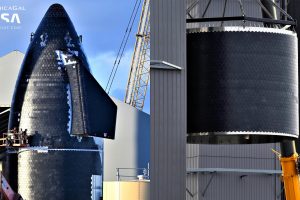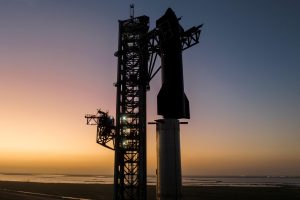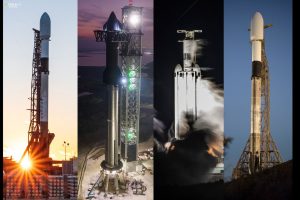SpaceX’s Falcon Heavy rocket successfully launched for the sixth time on Sunday, delivering three satellites into geostationary orbit. The launch took place at NASA’s Kennedy Space Center in Florida, marking the rocket’s sixth mission to date.
The Falcon Heavy is composed of three connected first stages of SpaceX’s workhorse Falcon 9 rocket. Since its inaugural test flight in February 2018, the Falcon Heavy has completed five additional missions, including two this year so far. Its debut in 2018 was quite iconic as it sent Elon Musk’s red Tesla Roadster and Starman, a mannequin dressed in SpaceX’s spacesuit, into orbit around the sun.
Falcon Heavy’s recent mission was successful, though it was a long one. The three satellites were deployed over a 13-minute period, about 4.5 hours after the powerful rocket lifted off.
The primary payload was ViaSat-3 Americas, a 14,000-pound broadband satellite developed by Viasat, a California-based company. According to SpaceX propulsion engineer Atticus Vadera, ViaSat-3 is set to become the world’s highest-capacity satellite and the largest all-electric satellite ever launched.
The other two satellites were Arcturus, a 660-pound communications satellite operated by Astranis Space Technologies, and GS-1, a cubesat managed by Gravity Space, which will focus on Internet of Things communications.
While the Falcon Heavy’s three first-stage boosters are designed for reusability like the Falcon 9, none of the boosters used in the recent mission were recovered. This was because the boosters had insufficient fuel for a safe return after carrying such a heavy payload to a distant orbit, as noted in a Space.com report.
For over five years, the Falcon Heavy was SpaceX’s most powerful rocket. However, the company’s Starship rocket, which remains in development, claimed that title with its maiden launch on April 20. Starship’s first-stage Raptor engines generate 16.7 million pounds of thrust at liftoff, surpassing the Falcon Heavy’s output by more than three times and nearly doubling the power of NASA’s Space Launch System rocket.





